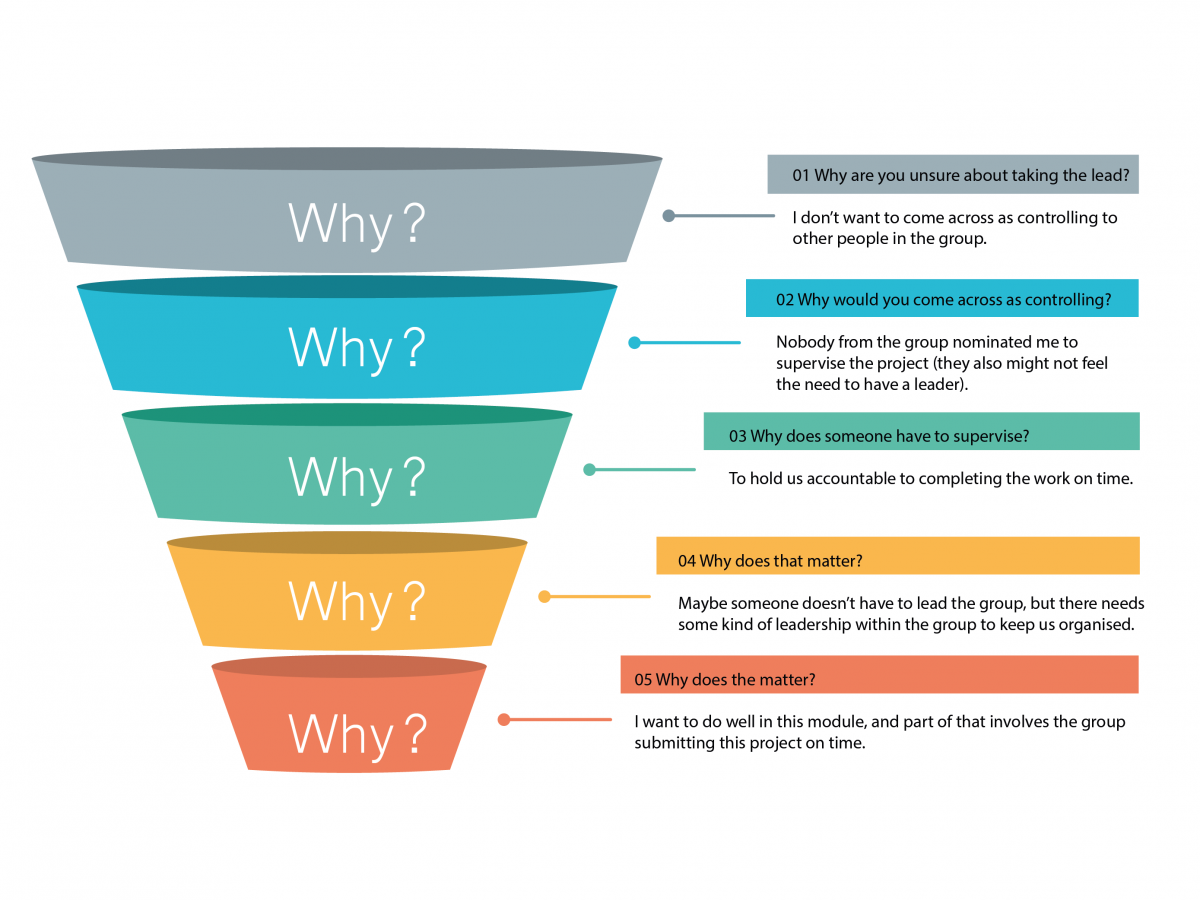
- Does your mind go back-and-forth between options when making a decision?
- Does arriving to a final decision feel like rolling dice - fraught with uncertainty?
- Have you thought about how you might uncover some of the underlying reasons behind your thinking?
You might start by asking yourself: why.
Dig a little deeper
The problem that you’re tackling may come from some underlying issue that you’re not aware of and/or haven’t addressed.
Asking yourself 'Why' can help you reach a clearer understanding about why you are feeling this way, helping you arrive to an appropriate solution for this problem.
Although research suggests five questions are enough to help you reach a clear understanding, you might find yourself asking less, or more, before you feel in a position of clarity and action.1
Take a look at the below examples to see this in context.
Scenario
You are put into groups for an assignment, but nobody has taken the lead on deciding when to meet to work together over the next couple of weeks.
You’re not sure whether to put yourself forward and suggest that everyone should have a role to ensure the work gets completed.
Asking yourself 'Why' may help you understand where this uncertainty has come from, guiding you towards more of an actionable resolution.

I’m unsure about making myself the leader of the group.
One underlying concern
Running out of time to complete the assignment.
Deciding whether I should take the lead on this project is one way of ensuring that we submit this work on time. That way, I can monitor our group's progress.
Another resolution could be to consider how I can better manage my time. Rather than being the group leader, I can raise my concerns about managing our time to the group.
Though this may annoy some members of the group, it will be even more annoying if we don’t take the initiative to start the work, and risk handing in the project late.

I’m wary about suggesting individual roles for this project.
Another underlying concern
Trusting whether other group members will contribute to the project.
Setting some group rules, such as having roles, can help keep others accountable to producing some of the work. Although this is just one way of solving the issue, it can help ease the fear around others not helping out in the group.
To view the text for these diagrams, please see:
Problems don’t always have one root cause
Although this approach may help you arrive to different, underlying concerns that may not have been obvious previously, your answers are only as good as the questions that you ask.
- You may arrive to a solution in fewer or more repetitions of ‘why’, depending on how specific, and truthful you are with the situation presented, and the answers given
- Asking ‘why’ may well be a helpful self-awareness technique. It might just help you understand more about underlying thoughts or feelings that you may not have been aware of before
Why not give it a go, and see what you discover about yourself?
References
1. Serrat, O. (2017) ' The Five Whys Technique', Knowledge Solutions, pp. 307-310. Available at: https://doi.org/10.1007/978-981-10-0983-9_32



